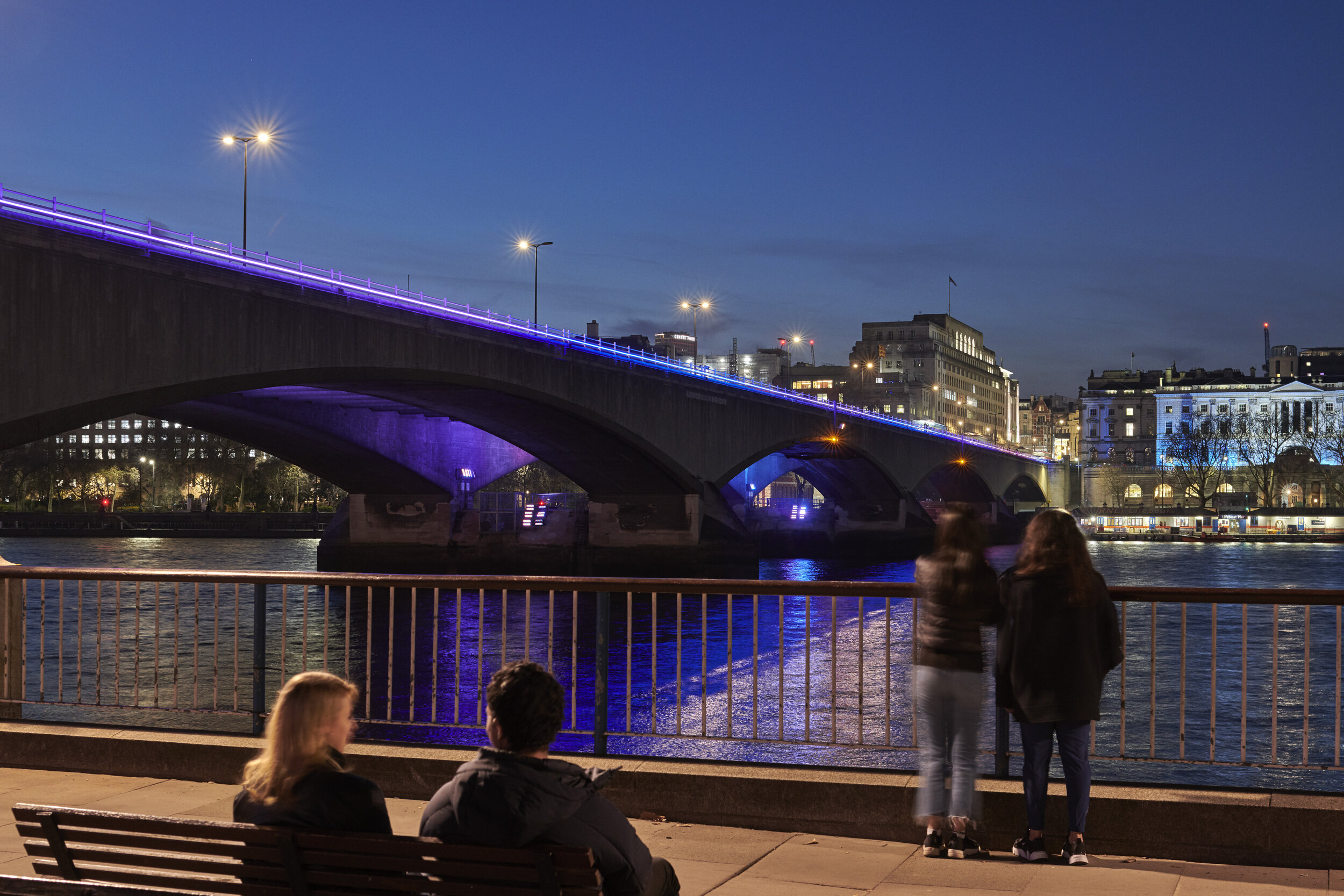Lighting up the Thames River
An ambitious $62 million artwork is transforming the Thames River in London into a light installation at night, extending from London to Lambeth bridges.
American artist Leo Villareal uses subtly moving sequences of LED light to reveal the beauty of the existing architecture of the city’s bridges and their relationship to the river.
At 5.1km Illuminated River is the world’s largest public art installation. An estimated 90 million people a year are expected to see it over it’s minimum ten-year lifespan.
The Thames River in London - Blackfriars to Lambeth Bridges. Image credit -Jason Hawkes.
“The Thames is our liquid history, spanning London’s two millennia,” says Hannah Rothschild, who came up with the idea of lighting the bridges, and is a Trustee of the Illuminated River Foundation. “Its bridges, each unique and essential, are the arteries connecting north, south, east and west; carrying many millions of people and goods from one shore to another, day after day.
“For too long, the Thames and its bridges have been under appreciated. Now Leo Villareal’s brilliant and imaginative design, the world’s longest public artwork, has transformed a snake of darkness into a vibrant and beautiful ribbon of light running through our midst, which will transform the bridges, boost the local night-time economy and foster a sense of wonder in these idiosyncratic and vital structures.”
London’s Waterloo Bridge. Image credit -James Newton.
Illuminated River covers nine bridges with the first four - London, Cannon Street, Southwark and Millennium – making their debut in 2019. And then COVID-19 struck and Villareal wasn’t able to travel to the UK to finish the next five bridges in person. Instead he worked with British architects Lifschutz Davidson Sandilands, using LIVEU streaming technology to view and adjust the light sequences in real time from his New York studio with less than a second in time delay.
Those final five - Blackfriars, Waterloo, Golden Jubilee, Westminster and Lambeth - were recently switched on - on time and on budget.
Every bridge has a different, never-repeated lighting algorithm. Villareal, whose work sits at the intersection between art and technology, says he took his inspiration from the natural and social activity of the Thames; barges and boats moving cargo and people, the traffic surrounding the bridges, and the ebb and flow of the tides. He spent months down by the river, observing before creating.
Westminster Bridge and the Houses of Parliament. Image credit - James Newton.
Villareal says he wanted to play with people’s compulsions to recognise patterns. “Brains can’t help but synchronise patterns that are coming in. So you’re seeing a pattern on the bridge and then you’re seeing a bus or something move by and the connection of those two things, even though they’re not literally connected, just happens. So I think it’s those moments of synchronicity that I’m trying to create and because it’s been made site specifically and in response to its environment, all those things are in there and it’s highly likely there’ll be these connections that people make.
“It’s been interesting to create something that’s very quiet and subtle and elegant. So it’s really not about this frenetic disco lighting. It’s something very different, meditative and contemplative that’s meant to really draw people into a different kind of zone, and to encourage them to look at all the beauty that surrounds them here in London.”
Fully funded by private philanthropists with the backing of the Mayor of London, Illuminated River’s funders include Arcadia – a charitable fund of Lisbet Rausing and Peter Baldwin, the Blavatnik Family Foundation, the Reuben Foundation (which funded the illumination of Westminster Bridge) and the Rothschild Foundation.



